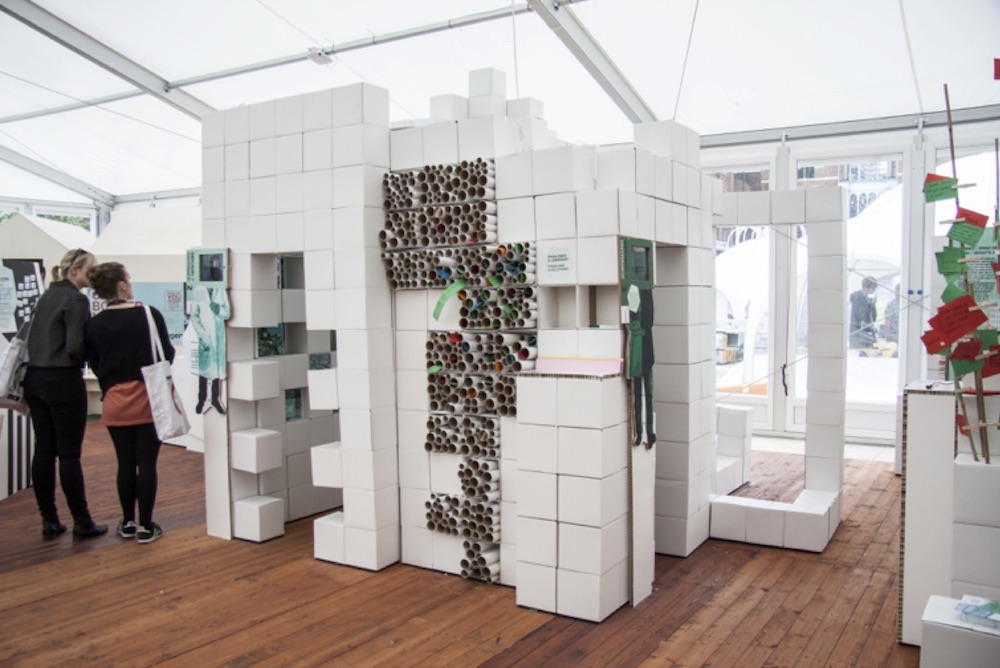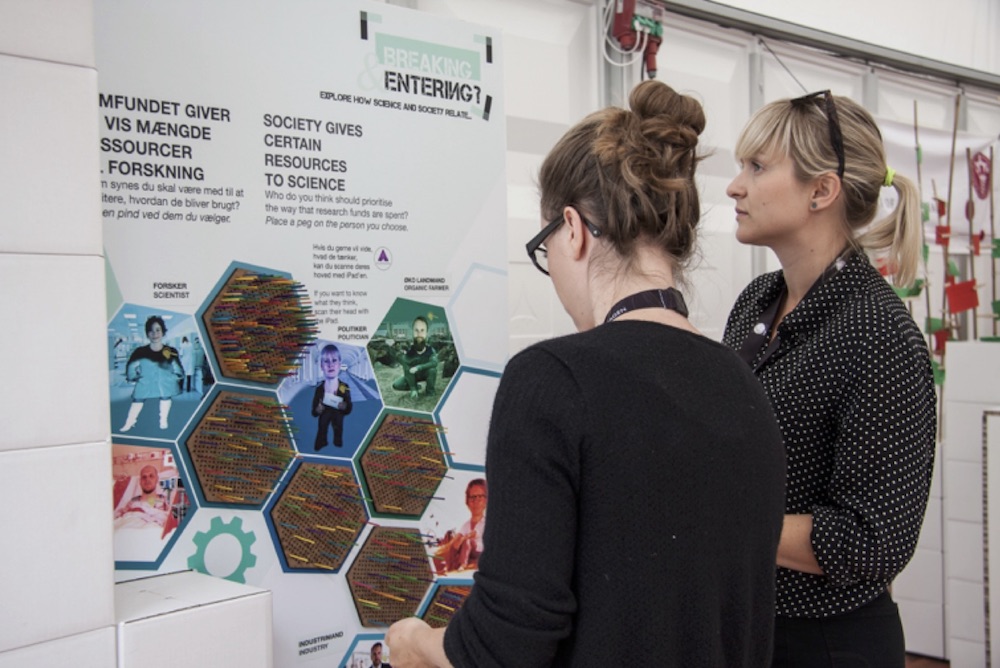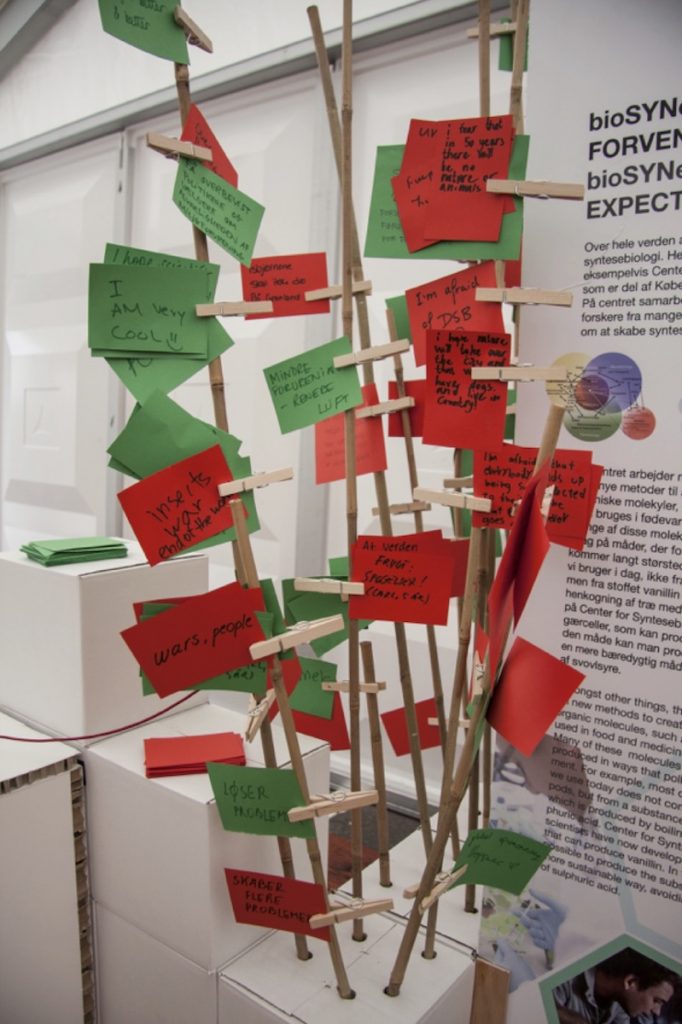Morgan Meyer
How can we render an abstract notion like ‘responsibility’ tangible? Is it possible to translate it into object for visitors to see, to engage with, to touch? How can we design exhibits in order to provide members of the public an embodied sense of the multiple and complex entanglements between science and society?
These are, in a nutshell, the questions that Maja Horst (University of Copenhagen) raised during her public lecture held at Mines ParisTech on the 17th of June 2019. Horst was invited to Paris within the scope of the European project SCALINGS, of which she is an advisory board member. I was invited, alongside Stefan Kuhlmann (University of Twente), and Jack Stilgoe (University College London), to comment on her presentation and I would like to share my comments in the following lines.
First of all, a few words about SCALINGS and Horst’s lecture. SCALINGS explores the potentials, effects and limits of ‘co-creation’ processes involving public and private actors, experts and amateurs, major companies and start-ups. The project examines how context affects innovation – and if co-creation can be scaled up – in fields ranging from robotics and energy to autonomous driving. Horst’s wide expertise on science communication provided a means to problematize the notion of co-creation from an original angle.

Horst’s starting point for her reflections was the installation called Breaking & Entering that was displayed during the EuroScience Open Forum in June 2014 in Copenhagen (see picture 1). The installation was directly based on the results of a research project on the social responsibility of science (Glerup and Horst 2014). So the challenge was to transform these results into an exhibit that allowed for public engagement and reflect about the different approaches and possible interpretations of responsibility. In order to do so, the installation displayed four different versions of – materialized via four different entries to – responsibility: ranging from a vision in which science is demarcated from society to one where science is integrated to society. The field of synthetic biology served as the empirical case for discussion.

I would like to suggest that an exhibition like Breaking & Entering opens up two fertile issues for further reflection.
First, the installation unpacks science by revealing its multiplicity and its complexity. It shows that science can be uncertain, ambiguous, problematic, risky. ‘There are no easy answers and quick solutions’ we hear on the video that advertises the exhibit. Indeed, the public is repeatedly confronted with this stance: visitors are asked questions; they can vote on certain issues (see picture 2); they can try to solve puzzles. When we compare this installation to a traditional museum exhibit, two shifts come to the fore: a shift from a display that provides answers to a display that allows for interrogations; and from an exhibition that represents existing matters to an exhibition that creates and experiments with new ones. As such, the exhibition can be situated within a wider theoretical move over the past two decades to focus on so-called ‘exhibition experiments’, with the publication of books such as Exhibition experiments (2008) and Creating connections: Museums and the public understanding of current research (2004), the work of collectives such as Xperiment! and institutions such as the Medical Museion in Copenhagen or the Zentrum für Kunst und Medien in Karlsruhe.
Exhibition experiments like Breaking & Entering question boundaries of various kinds: the boundaries between scientific research and science communication, between experiment and experience, between representation and reflexivity, between art and science. The challenge for scholars like Horst is this one: how to retranslate this rich experience back into a research paper? How has the physical encounter – the ‘boundary space’ to use Horst’s term – with the public enriched and surprised her position as a researcher in the social studies of science? How to make sense of the fact that the available iPads had been hacked and that some visitors ‘misbehaved’ by answering questions by relating to their personal experiences and emotions (see picture 3)?

‘I am very cool’).
My second point is about the texture and material architecture of Breaking & Entering. The starting point for the exhibit existed only on two dimensions: a research article published in the Journal of Responsible Innovation. So the move from a research paper to physical installation raised a rather tricky issue: how to represent something such as different kinds of relationships and interpretations onto the three dimensions of an exhibition?
The physical design of the installation is not only a means for visitors to get to grips with responsibility by showing that there are different ‘ways into’ this notion. The installation is also instructive for anyone who is interested in studying or teaching controversies. It visualizes and renders tangible the uncertainties and multiple and flexible interpretations of science that are particularly visible in moments of controversy. A controversy typically decentres the single object as the primary focus and concentrates instead on the positions and relationships between actors and objects. A controversy cannot be understood as a set of nicely demarcated and stabilised objects (that could be easily put into glass cases). Instead, controversies are about processes and they remind us of the multiple and sometimes contested relationships between science and society.
Installations like Breaking & Entering thus open up very stimulating research questions that can be summed up as follows: What are the critical landscapes of science communication? What can we learn about science and its controversies when we problematize and represent science as a practice that unfolds in space? What kinds of material and spatial issues are raised if we treat science communication not only as a matter of speech, but also as matter in itself? Breaking & Entering might have been a small and temporary installation, but it opens up more general and durable questions about the need to attend to the textures of science communication.
References
Chittenden, D. et al. (eds.) (2004) Creating connections: Museums and the public understanding of current research, Rowman Altamira.
Glerup C., Horst M. (2014) ‘Mapping ‘social responsibility’ in science’, Journal of Responsible Innovation 1(1): 31-50.
Macdonald, S., Basu, P. (eds.) (2008) Exhibition experiments, John Wiley & Sons.
Photo credits: Alexander Dich Jensen

